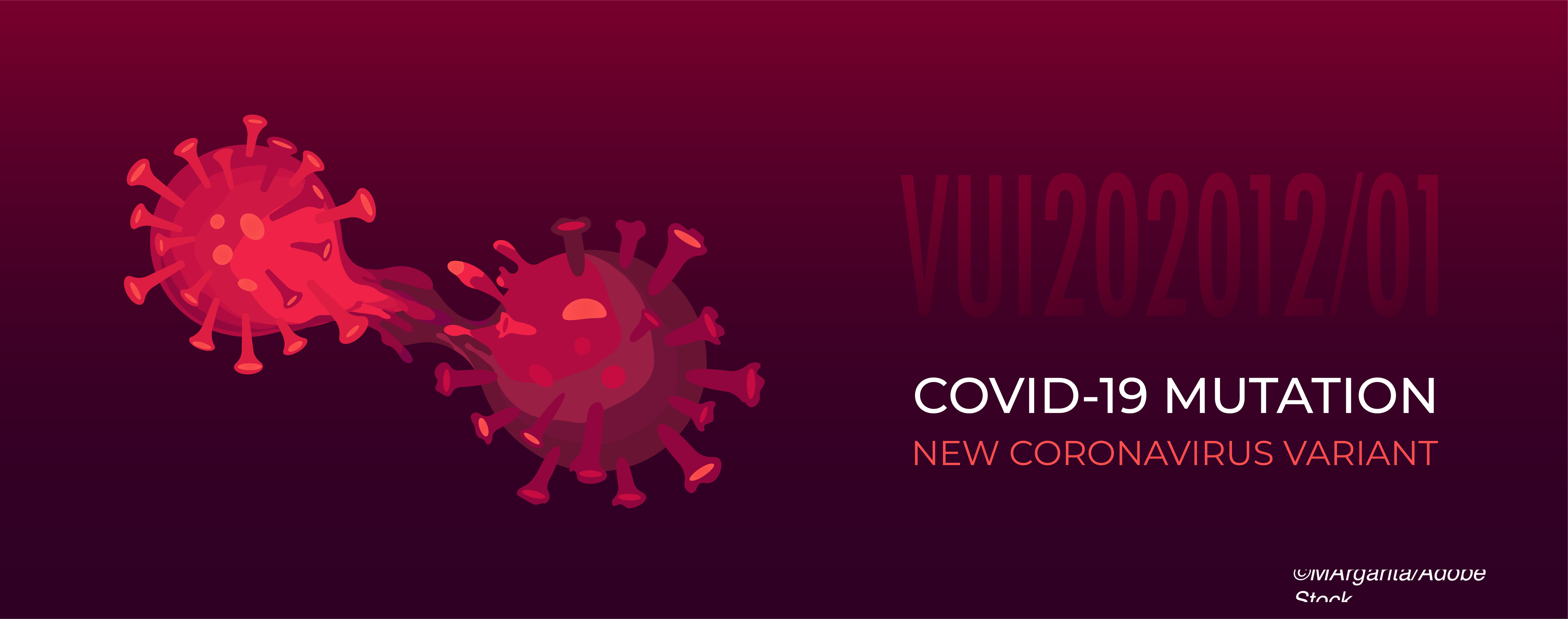A more contagious variant of SARS-CoV-2, B.1.1.7, has been detected in 10 U.S. states as of Jan. 13 and is projected to become the predominant source of Covid-19 infections by March, the CDC reported in Morbidity and Mortality Weekly Report.
As President-elect Joe Biden unveiled plans to enhance vaccine distribution across the country and laid out a $1.9 trillion Covid-19 relief package, Summer E. Galloway, PhD, of the CDC’s Covid-19 Response Team, and colleagues warned that increased SARS-Cov-2 transmission due to the B.1.1.7 variant “might threaten strained health care resources, require extended and more rigorous implementation of public health strategies, and increase the percentage of population immunity required for pandemic control.” B.1.1.7, which is estimated to have emerged in the U.K. sometime in Sept. 2020 and was first reported by Public Health England on Dec. 14, 2020, quickly became the dominant circulating SARS-CoV-2 variant in the U.K. and has since spread to over 30 countries.
William Hanage, PhD, an epidemiologist at the Harvard T.H. Chan School of Public Health in Boston, told the Washington Post that this latest report from the CDC “speaks to the urgency of getting vaccines out. It’s now a race against the virus.”
For its report, the CDC developed a two-variant compartmental model to illustrate the effect that the B.1.1.7 strain could potentially have on the U.S. pandemic trajectory. “For the model, initial assumptions included a B.1.1.7 prevalence of 0.5% among all infections, SARS-CoV-2 immunity from previous infection of 10%–30%, a time-varying reproductive number (Rt) of 1.1 (mitigated but increasing transmission) or 0.9 (decreasing transmission) for current variants, and a reported incidence of 60 cases per 100,000 persons per day on January 1, 2021,” the authors explained, adding that these assumptions constitute a generalization of conditions common across the country and are not representative of any single U.S. location.
The CDC also modeled the potential impact of vaccination, “assuming that 1 million vaccine doses were administered per day beginning January 1, 2021, and that 95% immunity was achieved 14 days after receipt of 2 doses. Specifically, immunity against infection with either current variants or the B.1.1.7 variant was assumed, although the effectiveness and duration of protection against infection remains uncertain, because these were not the primary endpoint of clinical trials for initial vaccines.”
According to this model, B.1.1.7 prevalence will start low but exhibit rapid growth in early 2021, becoming the dominant variant in March. “Whether transmission of current variants is increasing (initial Rt = 1.1) or slowly decreasing (initial Rt = 0.9) in January, B.1.1.7 drives a substantial change in the transmission trajectory and a new phase of exponential growth,” the authors explained. “With vaccination that protects against infection, the early epidemic trajectories do not change and B.1.1.7 spread still occurs. However, after B.1.1.7 becomes the dominant variant, its transmission was substantially reduced. The effect of vaccination on reducing transmission in the near term was greatest in the scenario in which transmission was already decreasing (initial Rt = 0.9)”
The CDC stressed that, while there is currently no known difference in clinical outcomes between previous SARS-CoV-2 strains and the B.1.1.7 variant, “a higher rate of transmission will lead to more cases, increasing the number of persons overall who need clinical care, exacerbating the burden on an already strained health care system, and resulting in more deaths.”
To fight the spread of this Covid variant, the CDC recommended continued genomic surveillance to identify B.1.1.7 cases and monitoring for other emerging variants, as well as “even more rigorous combined implementation of vaccination and mitigation measures (e.g., distancing, masking, and hand hygiene)” to control disease spread. The agency also recommended strategic testing of individuals without Covid-19 symptoms who are at increased risk for infection.
The CDC pointed out three limitations to this report: “First, the magnitude of the increase in transmissibility in the United States compared with that observed in the United Kingdom remains unclear. Second, the prevalence of B.1.1.7 in the United States is also unknown at this time, but detection of variants and estimation of prevalence will improve with enhanced U.S. surveillance efforts. Finally, local mitigation measures are also highly variable, leading to variation in Rt. The specific outcomes presented here are based on simulations and assumed no change in mitigations beyond January 1.”
John McKenna, Associate Editor, BreakingMED™
Cat ID: 190
Topic ID: 79,190,730,933,190,926,192,927,151,928,925,934


